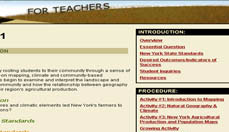Megan Kirkpatrick, New York State Historical Association and The Farmers' Museum, USA
http://www.harvestofhistory.orgAbstract
In October, The Farmers’ Museum launched Harvest of History, an interactive Web site and fourth-grade curriculum site dedicated to agriculture and rural life in New York State. The Web site features a printable version of the interdisciplinary curriculum, an interactive virtual tour of The Farmers’ Museum, a database of primary sources including museum objects and documents, and links to relevant resources.
Few schoolchildren today understand how food travels from farm to table or how important agriculture is in the history of New York State. Harvest of History addresses these concerns by providing a technology-driven experience for people to learn about agriculture and rural life in a fun and exciting way. The Web site will help students understand their rural roots, while meeting state and national education standards for social studies and science.
The Farmers' Museum developed the Harvest of History curriculum in collaboration with the National Gardening Association.
Keywords: virtual tour, museum education, databases, interactives, on-line curriculum, multimedia
Project Description
Several years ago, directors of education at The Farmers’ Museum and the National Gardening Association conceptualized a project that would bring agriculture, through history and science, to school children. The two institutions partnered up to create Harvest of History and wrote a grant to the National Endowment of the Humanities with The Farmers’ Museum as the lead institution. Focusing on a need to understand our shared agricultural heritage, the grant was based on the creation of integrated curriculum that would meet the New York State Learning Standards for the fourth grade in social studies and science. With the decline of agriculture as a family-based business, people from all demographics are removed from the process that brings their food from the field to the table. One hundred years ago, over 80% of the population participated in agriculture and agriculture-related industries; in 2000, the US Census Bureau removed farming as an occupation. Fewer and fewer people feel directly connected to the subject matter at The Farmers’ Museum. On site, staff witnesses this disconnect on a daily basis: parents identify oxen as buffalo, and students inquire if the chicken roasting over the open hearth is a dog.
The curriculum began with four modules that contain social studies content written by The Farmers’ Museum and science content provided by the National Gardening Association. The curriculum writers looked to the inquiry-based method, where students approach the topics with their own questions, and teachers guide learning based on their students’ interests. Inquiry-based learning is difficult to employ fully for the social sciences, but the methods informed the development of the current modules.
Background and History of The Farmers’ Museum
The Farmers' Museum is a private educational institution serving the public and is dedicated to representing American rural life as typified in central New York by preserving the past, recording the present and educating for the future.
The site of The Farmers' Museum has deep roots in New York State's rural past. The land has been part of a working farm since 1813, when it was owned by James Fenimore Cooper. Judge Samuel Nelson, whose office is part of The Farmers' Museum Village, bought Cooper’s farm in 1829 and raised sheep. Fenimore Farm, as it came to be known, changed hands again in the 1870s, when the Clark family acquired it.
In 1918, Edward Severin Clark built a modern, fully-equipped complex at Fenimore Farm for his prize herd of cattle. The barn, creamery, and herdsman's cottage remain on the grounds and form part of the museum complex. Architect Frank Whiting designed buildings and had them built in the Colonial Revival style using local stone. Today they house museum offices, exhibition spaces, and public areas. The structures are listed on the National Register of Historic Places.
The Farmers' Museum opened its doors to the public in 1944. At that time, the museum had 5,000 tools and objects, including important collections amassed by the Otsego County Historical Society, William B. Sprague, founder of the Early American Industries Association, and the Wyckoff family, one of Brooklyn's oldest farming families. Today the museum's collections number more than 23,000 artifacts. (http://www.farmersmuseum.org/about/history.htm). Fifteen historic buildings have been moved from their original locations to make up the 1845 rural village. Adjacent is a working farm that highlights historic agricultural practices. Today, the museum and interpretive staff work diligently to be relevant to its modern visitors. Harvest of History has become an avenue for innovation in times where many living history and outdoor museums are facing dwindling numbers and lower financial support.
Project Goals
In order to reach audiences that do not encounter farming on a daily basis and to meet the needs of New York teachers and students, the over-arching big picture goals of Harvest of History are to:
- Create an awareness of New York and American agriculture
- Make an attractive project that general visitors will use to learn about New York State history and The Farmers’ Museum
- Increase the presence of The Farmers’ Museum on the Internet.
- Create a curriculum that teachers will use in the classroom, one that fits into the state mandated curriculum and standards.
More specifically, the curriculum modules were developed around four major themes: culture, technology, economy and, geography, with secondary themes including transportation and seasonality. The Farmers’ Museum focused on activities linked to primary sources available at the museum’s library and its sister institution, the New York State Historical Association. The National Gardening Association provided plant-science and garden activities based on their experience with school garden curriculums like GrowLab. The main goal of the curriculum is to help students better understand the presence of agriculture and farming in their lives.
A printed curriculum is cost-prohibitive and difficult to disseminate on a state-wide scale. It was decided early on in the planning process to make the curriculum available on-line. Creating a Web-based project made Harvest of History available to a broad audience. This decision also led to other ideas: interactives based on the curriculum to meet the needs of a general Internet user, and highlighting The Farmers’ Museum on-line with a virtual tour of the buildings and grounds.
The Farmers’ Museum contracted with Educational Web Adventures (Eduweb) to design, build, and program the Web site. David Schaller, Eduweb Principal, met with project staff and helped them focus on the educational goals while developing an on-line component. The Web site, and whatever interactives, would be driven by the educational approach to the subject matter. The more focused goals included:
- Helping the audience understand where their food comes from
- Making people aware of their cultural and agricultural heritage
- Creating an understanding of how the seasonal availability of food has changed in the last 150 years
- Linking food to its origins and creating awareness of the inter-connectedness of our modern economy and how, and comparing/ contrasting it to the mid-19th century.
Overall, the project staff aspired to create an awareness of farming’s impact on our everyday lives and on the lives of our ancestors. With these goals, David Schaller led the project staff in conceptualizing an organized and focused framework for an interactive, virtual tour of The Farmers’ Museum.
Web Site Development
Harvest of History was launched at www.harvestofhistory.org on October 1, 2005. The final project is divided into four major sections: For Teachers, Explore the Village, Village Videomaker, and Primary Sources. Each section was developed to meet project and educational goals and to serve a variety of audiences. Staff at The Farmers’ Museum worked with Eduweb to create the Web site’s graphic identity, layout, and architecture.
‘For Teachers’ Curriculum
Internet delivery of the curriculum changed the possibilities for dissemination and the quantity of information and images provided in the activities. On-line accessibility allows any teacher to download the curriculum, free of charge, from home or office. A scholarly group of advisors (required by the NEH grant) and the pilot teachers who helped test and develop the curriculum suggested that teachers may approach it differently than planned. Some will download and utilize an entire module, while others will pick and choose activities to suit the needs of their classrooms. With this in mind, the curriculum can be viewed and used in several ways.

Fig 1: Module 1 in the ‘For Teachers’ section of Harvest of History. http://www.harvestofhistory.org/module1.html
After clicking on the For Teachers section, a teacher can choose a module and view an introduction that outlines the essential questions answered by the module, the New York State learning standards addressed, desired outcomes, student inquiries and resources. Teachers have the choice to view each part of the module individually (activities, worksheets, articles, etc.) or download the entire module as either a word or PDF file.
The For Teachers section was designed to be functional for a teacher using any part of the curriculum. Recognizing the immense amount of information created for the project, any section that a teacher chooses to use can be easily printed and used in the classroom. A single activity or primary source can be reproduced or displayed on screen without printing or using the entire curriculum.
‘Explore the Village’ Virtual Tour
The creation of complementary on-line activities makes the most of the Web format chosen to deliver Harvest of History. Originally four interactive elements were conceptualized, one to complement each of the modules. In addition to teacher use, the interactives provide reason for the student audience to access the Web site and also attract a more general audience. A virtual tour opens The Farmers’ Museum to a wider community and links the museum grounds to the curriculum project. As meetings and ideas progressed, project staff conceptualized integrating the interactive features into a virtual tour.
The virtual tour needed to be general enough to make sense to visitors not utilizing the curriculum. With Eduweb’s guidance, a format to highlight the museum grounds and the project goals was created.
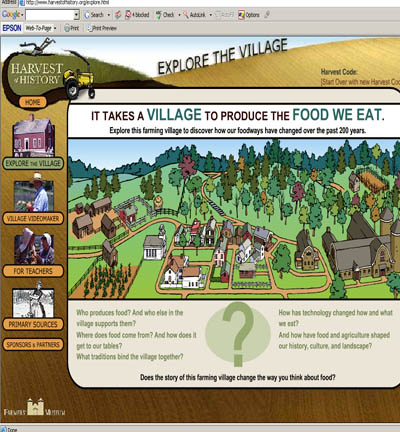
Fig 2: The opening page of ‘Explore the Village’ in Harvest of History. http://www.harvestofhistory.org/explore.html
The main page of Explore the Village is an animated map of The Farmers’ Museum. Each historic building on the tour can be clicked on for an introductory clip and a series of other assets to explore. The video clips in each location focus on the connection of the business or activity to agriculture and farmers. Because the goals of Harvest of History include the past, present and future of agriculture, the virtual tour also developed with elements that move outside the 1845 interpretive date of The Farmers’ Museum historic village. Each virtual tour stop includes a modern equivalent to the historic structure. To augment the idea of change over time, mid-20th century videos from the Prelinger Film Archives (http://www.archive.org/details/prelinger) show the industrialization and commercialization of agriculture, recognizing what happened between 1845 and today.
For example, after clicking on Dr. Thrall’s Pharmacy on the animated map, the visitor sees a view the historic building next to a local, modern pharmacy, Church and Scott.
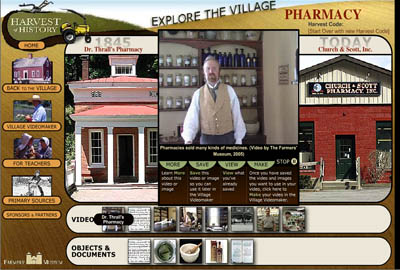
Fig 3: Dr. Thrall’s Pharmacy in ‘Explore the Village’. http://www.harvestofhistory.org/explore.html
Interpreter Patrick McGregor automatically pops up in a clip introducing the historic building. The video bar on the bottom has other clips of Patrick discussing the historic pharmacy’s link to agriculture. A Prelinger Archive video from 1952 represents the mid 20th Century, and two clips from Church and Scott focus on the modern pharmacy and its continued ties to farming. This tour stop provides information about the pharmacy through time while tying into the overarching themes of the project.
Filling out the contents of the virtual tour stops, historic and modern images, documents, and objects can be brought up and clicked on to view more detailed bibliographic and background information. All images and documents exist in the larger Primary Sources section (see below). In Dr. Thrall’s pharmacy, the objects and documents bar contains supporting materials like pharmacist’s tools and books.
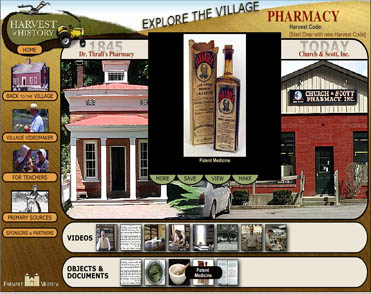
Fig 4: Patent medicine from Dr. Thrall’s Pharmacy in “Explore the Village.” http://www.harvestofhistory.org/explore.html
A VR tour is included in each historic building in Explore the Village. Using a digital camera, a 360 degree panoramic view of the tour stop gives students, teachers, and visitors a sneak peek at the offerings of The Farmers’ Museum.
To maintain the educational goals, each stop on the virtual tour is developed around one or more of the project’s themes: geography, technology, transportation, seasonality, economics, and culture. With these themes, students from the Cooperstown Graduate Program for History Museum Studies were given the task of creating several 20-30 second scripts to encapsulate the site and its agricultural links. All scripts were written in the third person to match the interpretation at the museum. Museum staff are costumed on site, but are able to speak to visitors from a modern perspective, unlike first-person interpretation where the staff member can only present the content from an historical point of view.
Project staff solicited a number of local businesses and farmers to become modern partners. Staff members from the businesses and organizations appear on film for the clips representing modern times. All modern participants gave voluntarily and enthusiastically of their time.
The choices of the modern equivalents were thoughtfully considered. Each needed to fit into the agricultural framework of the project. For instance, the historic inn, Bump Tavern, may be immediately equated with a hotel or motel. By using the project theme of transportation and examining the building’s past as a drovers’ tavern, the project staff chose a rest stop. The Bump Tavern clips discuss drovers stopping at the tavern after driving animals. At the rest stop, a trucker discusses the types of products hauled and the accommodations available at such stops. Trucking is a major method of moving agricultural goods in this country and fits the project better than a hotel or motel.
All production at The Farmers’ Museum was completed by project staff, using interpreters like Patrick McGregor in the pharmacy to perform the scripts. Eduweb took the raw footage and created three or four short videos for the 1845 portion of the virtual tour. The project staff worked with Eduweb to choose Prelinger videos that were edited to short, relevant clips. Where necessary, project staff re-wrote the voice-over to be more appropriate and objective. Many of the Prelinger videos were produced by companies touting their modern achievements and needed adjustment to reflect relevant information for the project. The modern videos were written and filmed by project staff with Eduweb creating a few clips to fill in the gaps. While the virtual tour is intended for a general audience, fourth grade cognitive ability guided the level of all the developed materials.
“Village Videomaker”
In order to reinforce the concepts presented in Explore the Village, Eduweb introduced project staff to From Cave Art to Your Art (http://www.sanford-artedventures.com/play/caveart/). Eduweb created this art education activity for Sanford Art Edventures, consisting of a video maker where visitors can select clips, music, images, and title cards to create and save or download a video. Allowing the visitors to interact with the material, even if by the simple act of dragging and dropping, means they take more away from the experience. Doing is more powerful than seeing and reading. Based on the From Cave Art to Your Art model, project staff worked with Eduweb to base the virtual tour on a similar concept.
While in Explore the Village, visitors can save clips, objects, or documents, called ‘assets.’ The first time an asset is saved, the visitors are each asked to request a ‘Harvest Code.’ This is a unique identifier that allows users to save assets and come back later to make or edit their creations. Once users have collected as many assets as desired, they can go to the Village Videomaker, organize their assets in a timeline, set them to music, and add title cards. The final product can be saved and retrieved with a Harvest Code or downloaded to the users’ desktops.
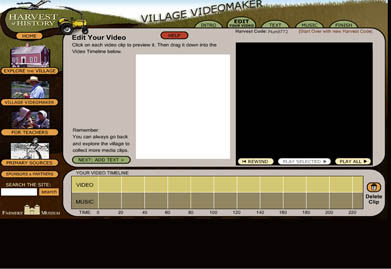
Fig 5: The “Village Videomaker” showing two saved assets. http://www.harvestofhistory.org/make_flick.html?database_code=PLUM8771
Designed to serve both the general and the school/teacher audience, the introductory page to the Village Videomaker includes suggested themes for producing videos. Teachers may assign the activity as an extension or assessment piece and have students turn in their Harvest Codes or burn their videos to CD for evaluation. The ultimate user goal of creating a video around one of the suggested themes helped informed the development of the virtual tour. The Village Videomaker and Explore the Village were developed simultaneously, creating two activities that work together.
“Primary Sources” Database
To support the curriculum and virtual tour, the database of primary sources was created to provide additional information and act as a research resource. Sources can be browsed or searched by keyword. Eduweb and project staff worked to think of the many ways users may try to research information. If someone uses the general Web site search function and looks for “plows,” search results will include entries in the Primary Sources section.
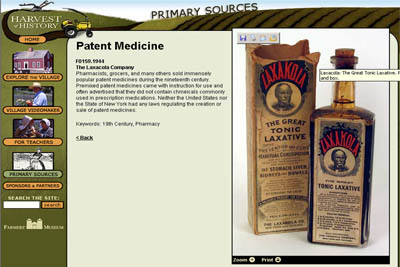
Fig 6: An entry in the “Primary Sources” database. http://www.harvestofhistory.org/primary_source_detail.html?ps_id=20
An entry consists of images of the object or document, bibliographic information, a short description, and keywords. Visitors can enlarge the images with Zoomify software and view all details of anything there, from the text on a patent medicine bottle to the fine lines of a newspaper article. Users can print out the information with a small image. Primary sources can also be browsed by the themes from the curriculum to support use of the school/teacher audience. The Farmers’ Museum can add more objects and documents so that both teachers and the general public can go to the database for research purposes and continue to find new information.
Outcomes
Since the Web site’s launch on October 1, 2005, over 19,500 hits have been recorded for Harvest of History. During a time when The Farmers’ Museum is closed, this is a significant number of people utilizing its resources during a usually quiet time.
A group of 12 New York State teachers piloted the curriculum in their classrooms and received training on the use of the Web site. Each of these teachers has become an advocate of the project, and several started training other teachers in their respective communities on the use of the curriculum, the Explore the Village, and the Village Videomaker. One pilot teacher wrote project staff about the connections Harvest of History made for her fourth-grade students.
My fourth grade students have been working on the 2nd and 3rd modules in the Harvest of History curriculum. We made arrangements with Cobleskill College to visit both the ag[riculture] division and the culinary arts as part of our Harvest of History work. The students actually got into combines and tractors and took a college course for the day with the director of the ag program. Then we all walked over to the culinary division to a gourmet lunch prepared by students. Before we went we examined manners both in the past and the present and tried to use proper etiquette.
After our visit we wrote two publications about the event… Next we decided to enter the Schenectady Museum/GE Invention Convention… During the fourth grade English Language Arts test one of the reading passages referred to inventing something. My students could really relate to the reading. The students have benefited so much from our Harvest of History project.
Harvest of History has also been used as a pre-visit tool to The Farmers’ Museum. Students and teachers have recognized the interpreters from Explore the Village and are able to make connections before arriving at the museum.
While the project is still in its infancy, visitor response, both general and educational, has been positive. Project staff are continuing to work on expanding Explore the Village, adding assets to the Primary Sources section and creating a quarterly e-newsletter for interested teachers.
The creation of Explore the Village has also let the museum capture the talent of the craftsmen who dedicate their time and work to The Farmers’ Museum. While used to highlight the agricultural story, Harvest of History has given voice to those who work with the public on a daily basis. The entire staff can be proud of the project because it was truly an institution-wide, collaborative effort.
Acknowledgements
Harvest of History has been made possible in part by a grant from the National Endowment for the Humanities, a federal agency.
References
The Farmers’ Museum, History. http://www.farmersmuseum.org/about/history.htm
From Cave Art to Your Art. http://www.sanford-artedventures.com/play/caveart/.
Prelinger Film Archive. http://www.archive.org/details/prelinger.
Cite as:
Kirkpartrick M., Harvest of History: Serving an On-line Audience, in J. Trant and D. Bearman (eds.). Museums and the Web 2006: Proceedings, Toronto: Archives & Museum Informatics, published March 1, 2006 at http://www.archimuse.com/mw2006/papers/kirkpatrick/kirkpatrick.html
